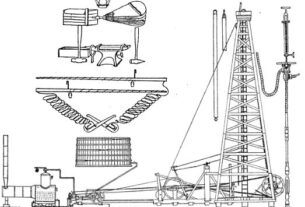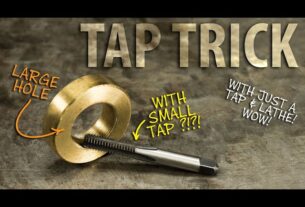Are you tired of using conventional machining methods that produce rough edges and uneven corners? Do you want to achieve precise corner rounding with minimal effort? If so, then a corner rounding tool is the solution you need.
A corner rounding tool is a cutting tool used in precision machining to round off sharp corners on workpieces. It is designed to cut smoothly and accurately, providing a clean finish that enhances the appearance and functionality of the workpiece.
In this article, we will explore everything you need to know about corner rounding tools, including their types, uses, benefits, and maintenance. Let’s dive in!
Types of Corner Rounding Tools
There are different types of corner rounding tools available in the market, each designed for specific applications. The most common types include:
1. Solid Carbide Corner Rounding End Mills
Solid carbide corner rounding end mills are versatile cutting tools used in high-speed milling applications. They are made from solid carbide material, which provides excellent wear resistance and toughness.
These cutting tools feature multiple flutes that allow for efficient chip evacuation and high material removal rates. They also come in different sizes and radii to accommodate various workpiece dimensions.
2. Indexable Corner Rounding Cutters
Indexable corner rounding cutters are another type of cutting tool used in precision machining. They consist of a replaceable insert that is mounted on a shank or arbor.
The inserts come in different shapes and sizes, allowing for flexibility in terms of radii and angles. These cutters are suitable for both roughing and finishing operations and can be used on different materials such as steel, aluminum, and composites.
3. Rotary Broaches
Rotary broaches are specialized cutting tools used for internal corner rounding applications. They consist of a hardened steel broach with a helical or angled tooth profile that rotates inside the workpiece.
These cutting tools are ideal for producing precise internal corners on small diameter holes or bores. They can also be used to create splines, gears, and other complex shapes.
Uses of Corner Rounding Tools
Corner rounding tools find applications in various industries, including aerospace, automotive, medical, and mold making. Some of the common uses include:
1. Deburring
Corner rounding tools are excellent for removing burrs and sharp edges left after machining operations. They produce a smooth finish that enhances the aesthetic appeal of the workpiece.
2. Chamfering
Chamfering is a process used to create beveled edges on workpieces. Corner rounding tools can be used to achieve precise chamfers of different angles and radii.
3. Edge Blending
Edge blending is a technique used to blend two adjoining surfaces into a single surface without any visible seam or step. Corner rounding tools can be used to blend edges with different thicknesses or contours.
4. Forming
Corner rounding tools can be used to form complex shapes such as fillets, rounds, and radii on workpieces. This makes them suitable for creating molds and dies for plastic injection molding and other manufacturing processes.
Benefits of Using Corner Rounding Tools
Using corner rounding tools in precision machining has several benefits, including:
1. Improved Surface Finish
Corner rounding tools produce a smooth finish that eliminates the need for secondary finishing operations. This saves time and reduces production costs.
2. Increased Tool Life
Corner rounding tools are designed to withstand high cutting forces and heat generated during machining operations. This ensures longer tool life and reduces tool replacement costs.
3. Consistent Results
Corner rounding tools provide consistent results from one workpiece to another, ensuring quality control and customer satisfaction.
4. Reduced Cycle Time
Corner rounding tools allow for faster machining speeds and higher material removal rates compared to conventional methods. This reduces cycle time and increases productivity.
Maintenance of Corner Rounding Tools
To maintain the performance and longevity of corner rounding tools, it is essential to follow proper maintenance practices. Here are some tips to help you:
1. Keep Them Clean
After each use, clean the cutting tool with a soft brush or cloth to remove any chips or debris that may have accumulated on the cutting edges.
2. Store Them Properly
Store the cutting tools in a dry, clean, and cool place to prevent rusting or damage from moisture or heat.
3. Sharpen Them Regularly
Sharpen the cutting edges regularly using a diamond wheel or honing stone to ensure optimal performance and longer tool life.
4. Use Coolants
Use appropriate coolants or lubricants during machining operations to reduce heat generation and prolong tool life.
Conclusion
Corner rounding tools are essential cutting tools in precision machining, providing precise and consistent results in different applications. They come in various types and sizes, making them suitable for different workpiece dimensions and materials.
By using corner rounding tools, you can achieve superior surface finish, increased tool life, reduced cycle time, and consistent results. However, it is essential to follow proper maintenance practices to ensure optimal performance and longevity.
We hope this guide has provided you with valuable insights into corner rounding tools and their uses. For more information, please refer to our wiki reference below.
Wiki Reference: https://en.wikipedia.org/wiki/Corner_rounding_endmill




